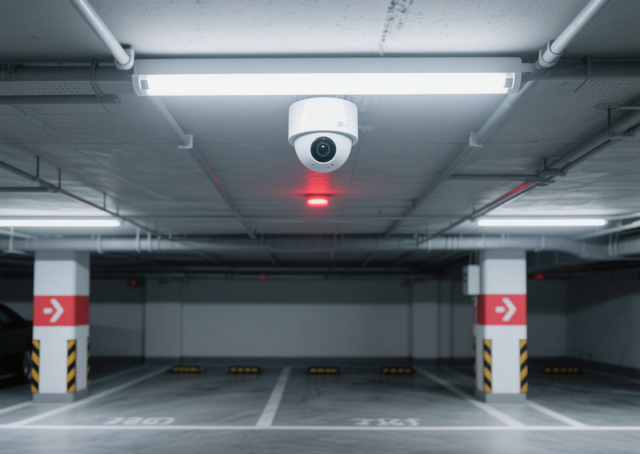Ultrasonic Sensors in Smart Parking: Principles, Applications, and Advantages

Working Principle:
Ultrasonic sensors in smart parking systems detect parking space occupancy by emitting ultrasonic waves. The sensor measures the time difference (Δt) between the emitted signal and its reflection from a vehicle or obstacle. Using the speed of sound in air (v ≈ 340 m/s), the distance to the object is calculated using the formula:
Applications in Parking Space Detection:
Parking Space Status Detection
Installation: Ultrasonic sensors are mounted on the ceiling, typically 2.5-5 meters above the parking spot.
Detection Logic:
Vacant: If the sensor detects the distance from the ceiling to the ground (H), the space is vacant.
Occupied: When a vehicle enters, the sensor detects the distance from the ceiling to the car's roof (h), which is shorter than H, indicating the space is occupied.
Anti-Interference: Multiple sampling and threshold filtering are used to minimize interference from dust, lighting, or adjacent vehicles.
Multi-Space Network Detection
In large parking lots, ultrasonic sensors are connected via RS485 or LoRa wireless communication, transmitting status data to a central control system, which processes it to create a real-time parking map.
Integration with Smart Parking Systems:
Real-time Parking Guidance
On-site: LED screens at key locations show available spaces, driven by real-time sensor data.
Off-site: Users can reserve spaces via an app, with navigation provided to the reserved spot upon arrival.
Parking Fee and Management
Time-based Charging: The system starts timing when a vehicle occupies a spot and calculates parking fees based on duration.
Abnormal Alerts: Alerts are sent if a vehicle stays too long or if the sensor malfunctions.
Data Analysis and Optimization
Traffic Analysis: Data from sensors help optimize space allocation and pricing strategies.
Maintenance: Sensors monitor their own status and send repair notifications if they malfunction.
Advantages of Ultrasonic Sensors in Smart Parking:
Low Cost: Compared to lidar or cameras, ultrasonic sensors are affordable and suitable for large-scale deployment.
Strong Anti-Interference: Ultrasonic sensors operate well in various environments, unaffected by lighting, color, or weather conditions.
Easy Installation: Ceiling-mounted sensors don’t require floor or wall modifications, reducing installation time and operational disruption.
Low Power Consumption: With intermittent operation, ultrasonic sensors have low energy consumption, making them suitable for battery or PoE power.
Integration with Other Technologies:
IoT Integration: Ultrasonic sensors connect to the cloud via IoT gateways, enabling remote monitoring and management of parking data.
AI Integration:
License Plate Recognition: Sensors assist with plate recognition when cameras fail due to angle or obstruction.
Parking Prediction: AI algorithms analyze historical data to predict parking space availability, offering users more accurate recommendations.
Typical Case Studies:
Shenzhen Commercial Parking Lot: Over 2,000 ultrasonic sensors reduced the average search time from 15 minutes to 3 minutes, increasing space utilization by 20%.
Hangzhou Smart Park: Combined with AI, ultrasonic sensors automatically alert for long-term parking, reducing the issue of “zombie cars” occupying spaces.
Contact Us
If you have any questions about our products and services, please fill out the form and contact us.